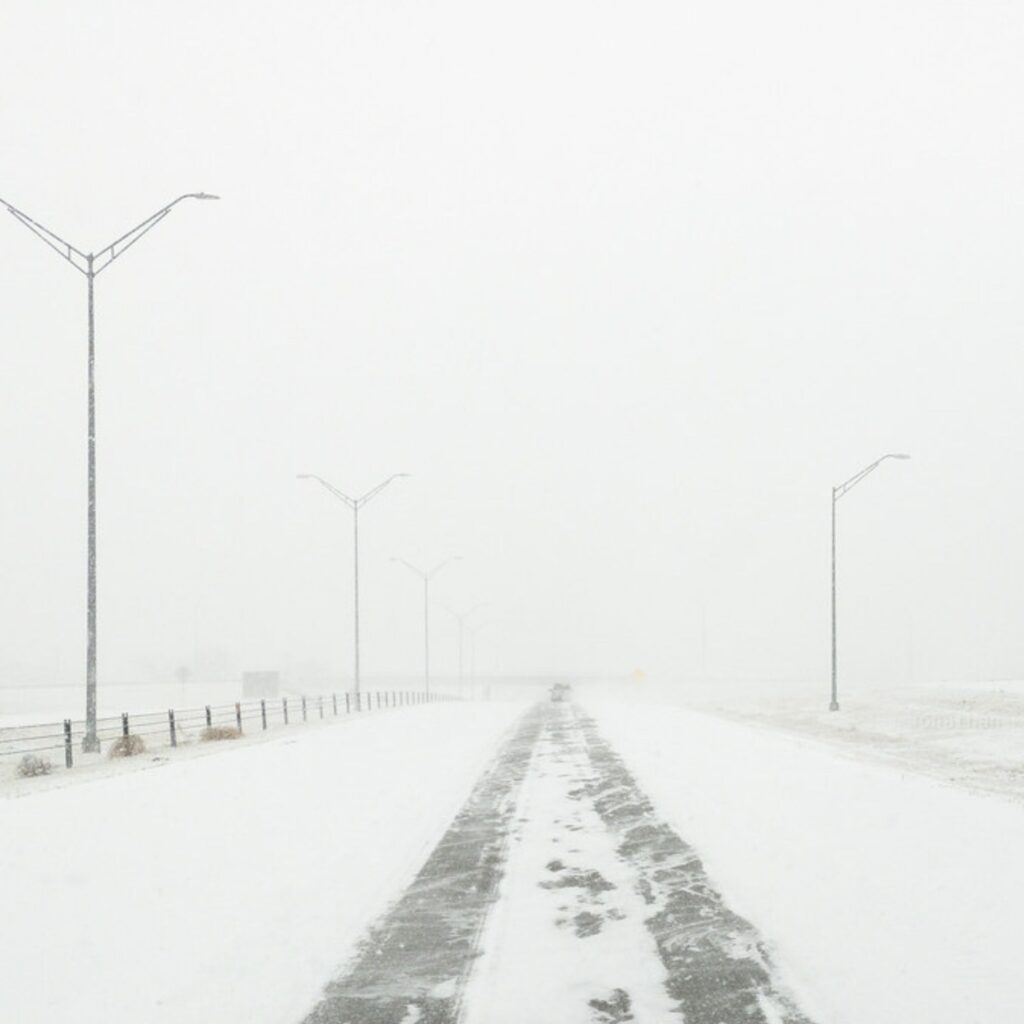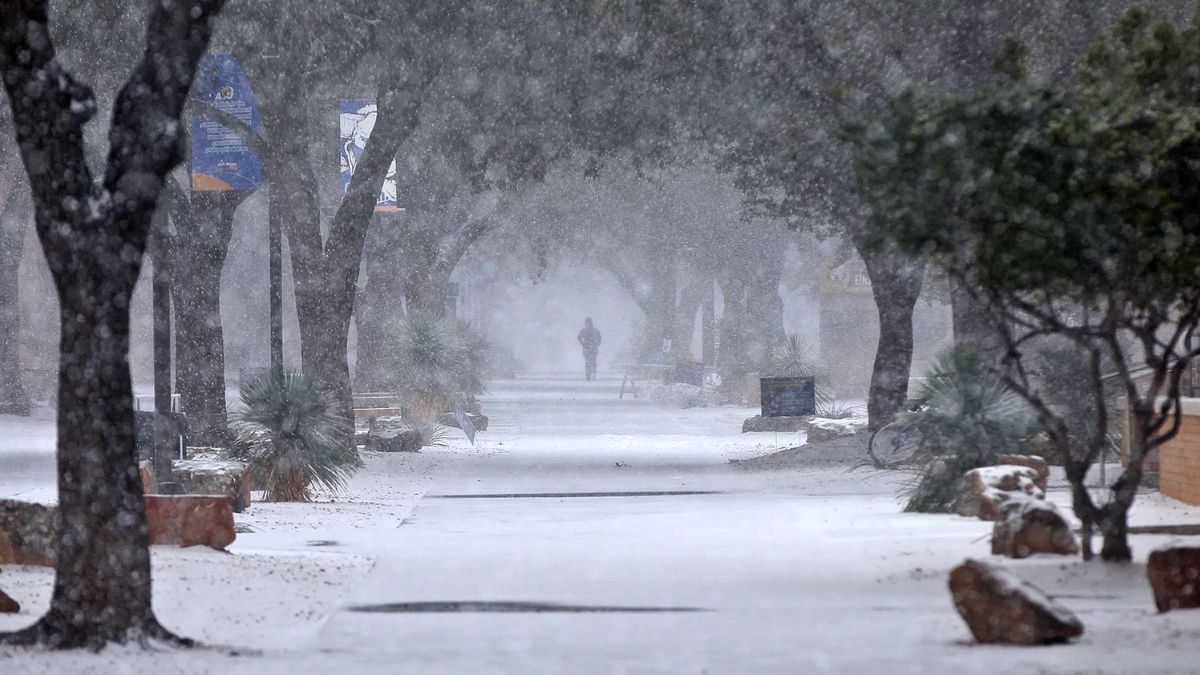No, it does not snow in San Angelo, TX. Snowfall is extremely rare and infrequent due to the city’s semi-arid climate. The city experiences very light snowfall events once every few years. The occurrence of snow in San Angelo is sporadic and limited compared to regions with colder climates.
San Angelo, TX, receives an average of 1 inch of snow per year, primarily in December and January. The greatest monthly snowfall on record for San Angelo was 13.0 inches in January 1926, while the highest seasonal snowfall was 17.3 inches in 1918-1919. Snow is a rare spectacle in San Angelo, with less than one inch falling annually
While snowfall in San Angelo may bring delight to residents and visitors, it is essential to remember that the city is not typically prepared for wintry conditions. Consequently, even light snowfall events can lead to disruptions in daily life, such as icy road conditions.
When it comes to winter weather, most people think of picturesque scenes with blankets of snow covering the landscape. However, certain regions may not experience this winter wonderland as often as others.

San Angelo, located in the heart of West Texas, is known for its warm and dry climate. But does it ever get a taste of snow? This article will delve into the historical records and climatic factors to answer the burning question: Does it snow in San Angelo, TX?
Location Overview
San Angelo is a city located in the state of Texas, United States. It is situated in Tom Green County in the west-central part of the state. The city lies along the banks of the Concho River, approximately 225 miles west of the state capital, Austin.
With a population of around 100,000, San Angelo serves as the principal city of the San Angelo Metropolitan Statistical Area. The region is known for its semi-arid conditions, and picturesque landscapes, attracting visitors with its natural beauty and outdoor recreational opportunities.
Apart from stunning views, San Angelo is home to a vibrant arts scene, historic downtown, and several educational institutions, including Angelo State University.
Geography and Climate of San Angelo
San Angelo’s geographical location in West Texas has a significant influence on snowfall patterns. The city’s proximity to warm air masses from the south and west limits the formation and sustenance of snowfall.
Additionally, San Angelo’s elevation of around 1,900 feet above sea level contributes to relatively infrequent and light snowfall, as lower temperatures are required for significant snow accumulation.
San Angelo boasts a typical semi-arid climate characterized by hot summers and mild winters. With an annual average temperature of around 67 Fahrenheit, it is no surprise that this region is known for its warm climate. However, despite the overall mild temperatures, winter in San Angelo can still bring occasional surprises.
Historical Snowfall Record
While snowfall in San Angelo is relatively rare, it is not entirely unheard of. The city has seen its fair share of snowfall events over the years, though they tend to be infrequent and relatively light.
The historical records show that snowfall occurs approximately once every few years in San Angelo, with some years experiencing a dusting while others see slightly heavier accumulations.
One of the most significant snowfall events in recent history occurred on Christmas Eve in 2004 when San Angelo woke up to a winter wonderland with a recorded snowfall of around 6 inches. This rare occurrence brought joy to residents, especially children who got to experience a white Christmas.
Other notable and more recent snowfall events include December 2017 and January 2021 when San Angelo received light snowfall. These events may not be a regular occurrence, but they surely bring joy and excitement to the residents.
Winter Season & Snowfall Pattern
San Angelo’s relatively low snowfall can be attributed to several climatic factors. First and foremost, its location in West Texas exposes it to warm air masses coming from the south and west, which can hinder the formation and sustenance of snowfall.
Additionally, the city’s elevation above sea level plays a role in limiting snowfall, as lower temperatures are necessary for snow to form and accumulate. When snow does occur, it often leads to disruptions in daily life, as local authorities and residents are not accustomed to dealing with significant winter weather.
Locations to Enjoy Snow
In San Angelo, Texas, experiencing significant snowfall is rare. However, there are a couple of locations where you can enjoy snow-related activities when the occasional snowfall does occur:
- San Angelo State Park
Located just outside the city, San Angelo State Park offers opportunities for outdoor winter activities when snow blankets the area. The park features picturesque trails, open fields, and hills that can be perfect for sledding, snowball fights, or building snowmen.
- Local Parks and Green Spaces
San Angelo has several parks and green spaces that can become transformed into winter wonderlands during a snowfall. Parks like Kirby Park, Santa Fe Park, and Kids Kingdom provide ample open spaces for snow-related fun and activities.
It is important to note that these locations offer enjoyment during rare snowfall events, which can vary in intensity and accumulation. It is always a good idea to check local weather forecasts and road conditions before venturing out to these areas during snowy conditions.
Additionally, be aware that San Angelo’s infrastructure and resources for managing snow and ice are limited compared to areas that regularly experience colder weather. Therefore, be prepared for potential disruptions and limited snow removal efforts in the city.
Factors Influencing Snowfall
Several factors influence snowfall in San Angelo, Texas. The city’s semi-arid climate and geographical location play a significant role. San Angelo is situated in West Texas, where warm air masses from the south and west often hinder the formation and sustenance of snowfall.
Additionally, the city’s elevation above sea level limits the occurrence of substantial snowfall, as lower temperatures are required for snow to form and accumulate. These factors contribute to the infrequent and generally light snowfall events experienced in San Angelo.
Conclusion
While San Angelo, TX, is more often associated with its warm and dry climate, the occasional snowfall events remind residents and visitors that winter does make its presence known, albeit sparingly.
With an average of one snowfall event every few years, San Angelo’s residents get a taste of winter magic when the flakes fall from the sky. So, while snowfall may be infrequent and relatively light in this part of West Texas, the occasional sight of snow in San Angelo brings joy and wonder to the community.
